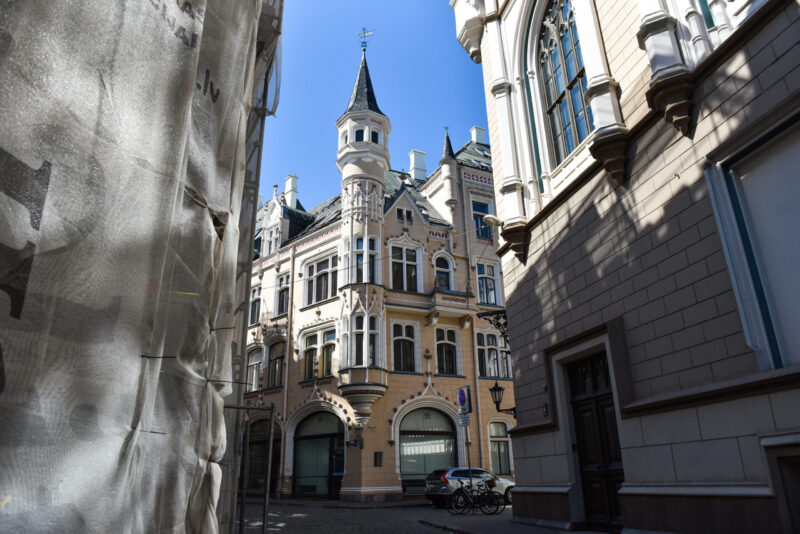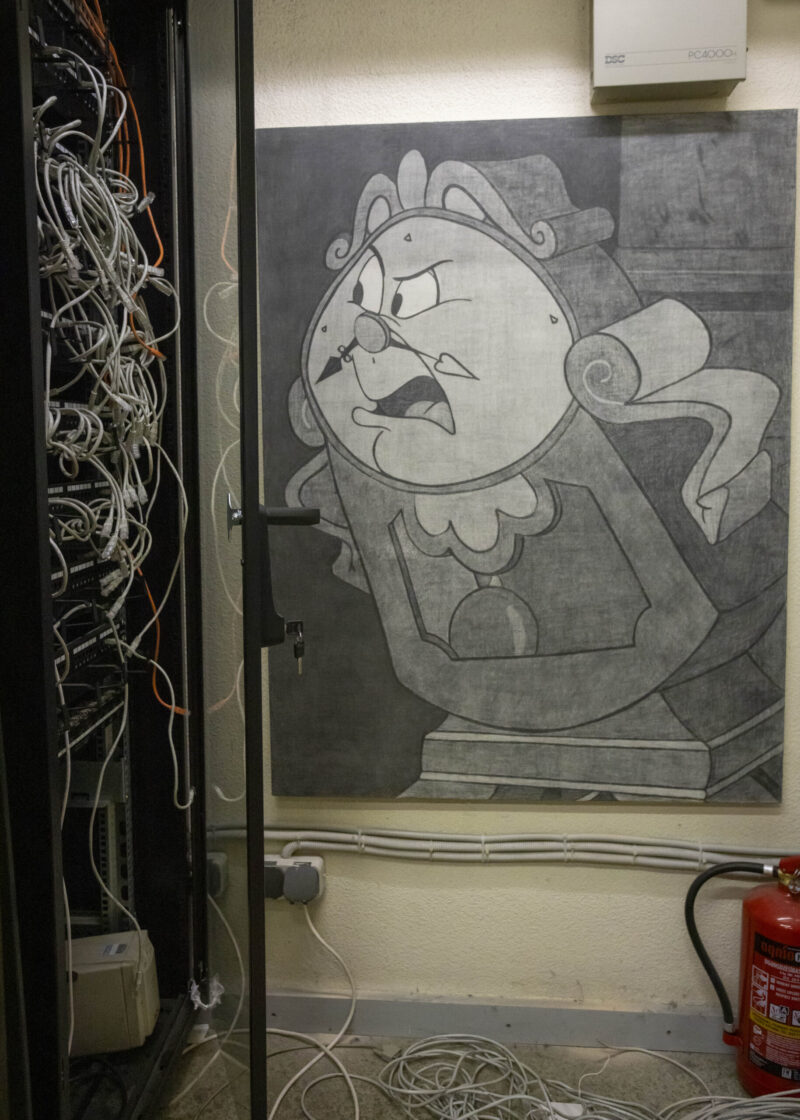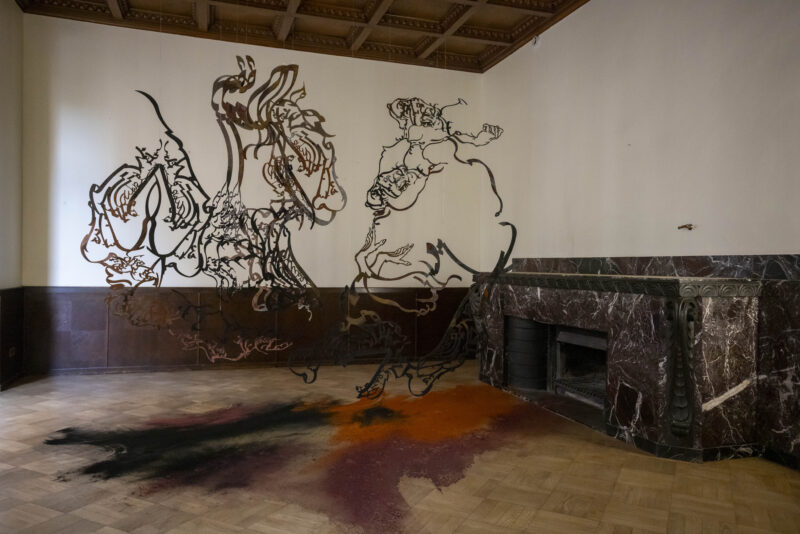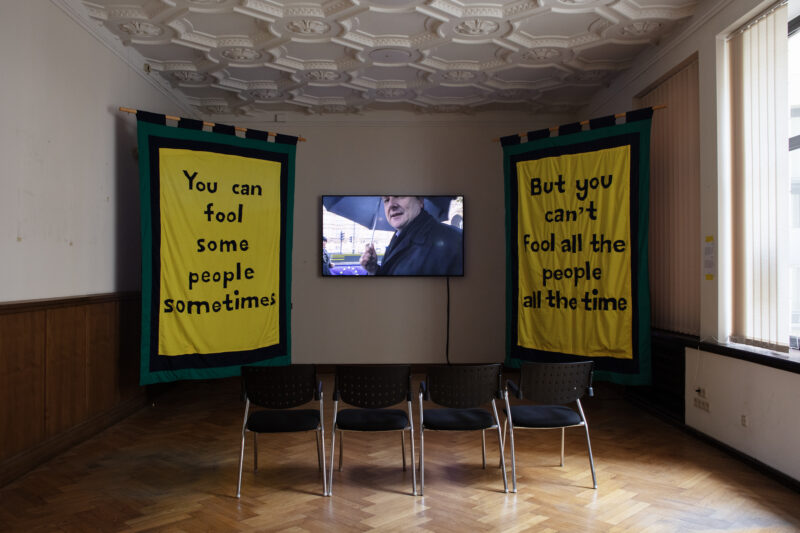by Adela Lovric // Sept. 25, 2024
How is it possible to have a contemporary art festival in Latvia run for 15 years? The preview of Survival Kit 15 kicked off in a somewhat acerbic tone with this question directed at Solvita Krese. With the Latvian Centre for Contemporay Art, Krese launched the annual festival in Riga in 2009 as a response to the economic crisis, which had led to major budget cuts in the cultural sector. The inaugural edition took place in bankrupt storefronts, lending spaces left vacant by the crisis a creative pulse. The festival’s name reflected the urgency of the moment, as artists and cultural workers were compelled to adapt to the challenging circumstances to stay afloat. Over the years, as new crises emerged (or old ones persisted), the need to continuously find new ways to survive as a non-profit organization for contemporary art has remained as vital as ever.
More than just a festival, Survival Kit is an effort to map and revitalize city development, making visible its abandoned or overlooked parts, and infusing them with new ideas. Thanks to this initiative, some of the buildings that have been repurposed by the festival over the years now function as cultural venues. In this spirit, the 15th edition occupies three new locations, with most artworks housed in the Guild, a slightly deteriorating but nevertheless striking Neo-Gothic building in the historic city center that now serves as the office of the Riga City Construction Board.

Survival Kit 15 main venue at Amatu Street 4, Riga, Latvia // Photo by Aleksandra Zēberga
Curated by Jussi Koitela under the title ‘Measures,’ Survival Kit 15 takes inspiration from feminist theorist and physicist Karen Barad while maintaining focus on the specific context of Riga. In her 2012 book, ‘What Is the Measure of Nothingness? Infinity, Virtuality, Justice,’ Barad writes: “Measurements are agential practices, which are not simply revelatory but performative: they help constitute and are a constitutive part of what is being measured.” Koitela takes this idea of measuring as world-making as the central point of departure for his curatorial concept, stating that “[p]resenting and experiencing ‘art’ are world-making: ‘things’ such as art, exhibition venues, visitors and social, historical and geographical contexts do not pre-exist but are co-constituted via exhibitions.” With ‘Measures,’ Koitela and the participating local and international artists examine the role of knowledge ecologies within Riga’s urban context, exploring the potential of new narratives to shape the future of communal life.

Luīze Rukšāne: ‘Everything Goes in an “O” (Circle),’ 2024 // Photo by Didzis Grodzs
On the ground floor of the main festival venue, visitors are greeted by Monia Ben Hamouda’s neon sign with a phrase in Arabic that ominously reads: “Inshallah the end of the world is tomorrow.” Displayed in the same room, a print from Toril Johannessen’s ‘Words and Years’ series visualizes the occurrence of the word ‘revolution’ in Time Magazine between 1926 and 2011, which suddenly peaks around 2010. Luīze Rukšāne’s tall wooden block with a drawing of a clock marks the time—5 am—in reference to the start of Russia’s full-scale war in Ukraine, matching the feeling of impending doom that might have, in fact, already arrived, and will continue arriving. Koitela approaches time as agential measure in these representational terms, but also by rhythmically punctuating the exhibition with serial artworks across three festival venues on both sides of the Daugava river, thus also metaphorically bridging it as a physical and psychological barrier. In addition to Rukšāne’s and Johanessen’s series, Vidha Saumya’s poems about memory and identity subtly emerge on the walls of multiple exhibition rooms, articulating anxieties and longings informed by the artist’s experiences in India and Finland.

Monia Ben Hamouda: ‘Hitting (Aniconism as Figuration Urgency),’ ‘About Telepathy and other Violences VI (Aniconism as Figuration Urgency),’ ‘About Telepathy and other Violences III (Aniconism as Figuration Urgency),’ ‘Holding (Aniconism as Figuration Urgency),’ all 2023 // Photo by Didzis Grodzs
Identity is also a central concern in Ben Hamouda’s second feature in the show: an installation of four steel sculptures suspended in mid-air, coated with spices that appear to spill onto the floor, creating a powdery layer beneath. The laser-cut steel sheets, like calligraphic strokes frozen mid-motion, channel the energy of futurism, powerfully referencing the artist’s Tunisian-Italian heritage. Konstantin Zhukov likewise dives into the theme of identity, albeit with a focus on archiving the fragmented queer history of Latvia. At the heart of his work installed in a dark basement room is a video piece that recalls the raw energy of Latvia’s first gay parties in the early 1990s, set to thumping electronic beats and a rapid-fire montage of black-and-white images of nude bodies. A street-facing window, veiled with a semi-transparent print of hands gripping naked flesh, provokes the passersby to explore the early days of Riga’s underground queer scene that otherwise descends into dark corners of selective cultural amnesia.
One of the exhibition’s arguments is that Riga extends beyond its geographical, historical, material and mental boundaries; it is also shaped by experiences and “things” from elsewhere, which are in turn connections and continuations of other “things.” Jeremy Deller’s film ‘Putin’s Happy,’ for example, documents the rise of disturbing far-right sentiments in the frenzied political aftermath of Brexit—a fascist turn rooted in Western imperialist ideas that has similarly grown familiar across Europe in the past years.

Jeremy Deller: ‘Putin’s Happy,’ Video, 41 min, 2019 // Photo by Krstīne Madjare
Shubhangi Singh’s installation tackles the causalities of colonialism through a scientific lens, exploring how it intersects with early astronomy and botany. The work centers on the 1769 Transit of Venus, when a team of scientists boarded a ship commanded by Captain James Cook, aiming to observe the rare cosmological event and gather data to measure the universe. This same voyage also mapped the Pacific, sealing Australia, New Zealand and other Pacific and Oceanic islands into colonial rule and thus advancing both science and imperialism. Along with a three-channel video and a series of sculptures, the installation also features a video viewable through an antique telescope on a small screen placed across the courtyard.
With a sensitive curatorial approach rooted in Riga while embracing and multiplying a rich spectrum of perspectives, Survival Kit 15 underscores measuring as a dynamic speculative framework to rethink knowledge across time and space. It nudges audiences to not trust what they’re presented with and to question everything, including their own perceptions. Aligning with this year’s theme, the accompanying public program, curated by Gundega Laiviņa, delves into various forms of knowledge produced by the city and its communities. Through four episodes—‘Artist,’ ‘Place,’ ‘Nature’ and ‘Future’—across festival venues and throughout Riga, it invites the public to reclaim and reshape the city as a porous, ever-evolving landscape of possibility.
Exhibition Info
Survival Kit 15
Group Show: ‘Measures’
Exhibition: Sept. 6-Oct. 6, 2024
lcca.lv/survival-kit-15
Various Venues



















